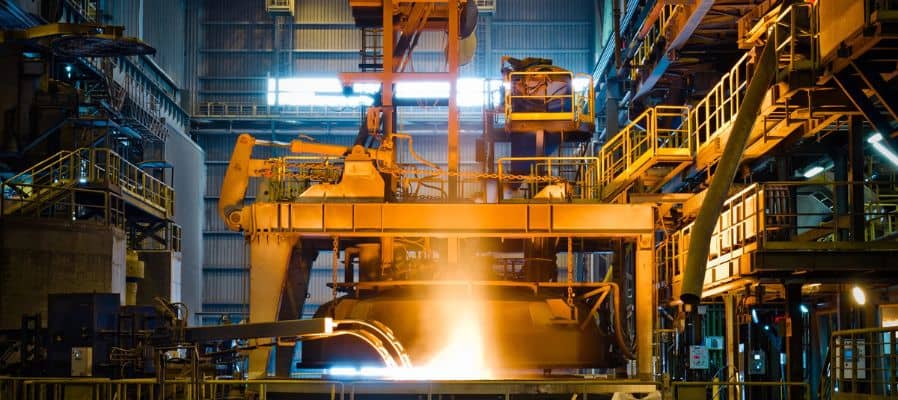- Home
- About Us
-
-
- Technoshot HMI
- Frenic Mini – Power Supply Voltage 1- Phase 200VAC
- Frenic Mini – Power Supply 3- Phase 400VAC
- Frenic Mega 3-Phase 400VAC Low Duty
- Frenic Mega 3-Phase 400VAC Heavy Duty
- Solar Mini- I Phase 200VAC
- Frenic Solar Mini – 3 Phase 400VAC
- Frenic Ace – GBLM3
- Frenic-eHVAC
- Frenic Ace High Performance Inverter 3-Phase 400VAC
- Frenic Lift Elevator Inverter 3 Phase 200VAC
- Frenic Lift Elevator Inverter 1 Phase 200VAC
- Vechi Electric
- Mitsubishi
-
- Projects
- Blog
- Contact
Steel Mill Automation

Steel Mill Automation
Adding value of every stage of steel production. We know the hazards and challenges of the metal production industry and their solutions. as part of Fuji Electric We are authorized to sales and services for Fuji Gemco Pvt Ltd.
Lunawat Automation: Driving Steel Mill Excellence in Chhatrapati Sambhajinagar
Lunawat Automation, based in Chhatrapati Sambhajinagar, Maharashtra, India, is a company with profound expertise in delivering automation solutions specifically for the steel mill industry. Their comprehensive knowledge, therefore, spans various critical aspects of steel production, ranging from raw material handling and initial processing to efficient finished product management. This deep specialization, consequently, enables them to offer tailored and highly efficient automation systems. These systems are meticulously designed to optimize productivity, significantly improve quality control, and crucially enhance safety within demanding steel manufacturing environments. Lunawat Automation thus caters to the diverse automation needs of steel mills not only within the region but also potentially beyond.
The Transformative Benefits of Steel Mill Automation
Steel mill automation, furthermore, offers a wide range of significant benefits that are actively transforming the industry, making it demonstrably more efficient, substantially safer, and highly competitive. Here’s a detailed breakdown of these key advantages:
1. Increased Efficiency and Productivity
Firstly, automated systems facilitate 24/7 Operation. This means they can operate continuously without fatigue, breaks, or shift changes, thereby significantly boosting production rates and overall output. Secondly, machines ensure Faster Cycles. They work much faster than humans for repetitive tasks such as material handling, cutting, welding, and rolling, leading to shorter production cycles and quicker delivery times. Moreover, automation enables Optimized Processes. Systems, often powered by advanced AI and machine learning, can monitor and adjust production parameters in real-time (e.g., temperature, pressure, chemical composition), consequently ensuring optimal performance and minimizing bottlenecks. Finally, automation leads to Reduced Downtime. Predictive maintenance tools, in fact, analyze data to detect potential equipment failures before they occur, allowing for proactive maintenance and thereby significantly reducing unscheduled downtime.
2. Improved Safety for Workers
Undeniably, automation ensures Hazardous Task Removal. Steel mills are high-risk environments characterized by extreme heat, heavy machinery, and dangerous materials. Robots and automated systems, therefore, can take over hazardous tasks like handling molten metal, operating in high-temperature zones, and dealing with sharp objects, consequently reducing the risk of workplace injuries and improving overall safety conditions. Furthermore, automation results in Reduced Human Error in Critical Areas. By minimizing human intervention in critical processes, it directly reduces the potential for errors that could otherwise lead to accidents or product defects. Ultimately, this creates a Safer Work Environment. As a result of automating repetitive and physically demanding tasks, workers can be moved away from dangerous areas and effectively retrained for higher-skilled roles such as system maintenance, programming, and quality control.
3. Higher Precision and Quality Control
Crucially, automated systems guarantee Consistent Output. Designed for accuracy, they do not suffer from fatigue, thereby ensuring precise cutting, welding, and material handling. This, in turn, leads to consistent product quality and significantly fewer defects. In addition, they provide Real-time Monitoring and Adjustment. Advanced sensors and data analytics constantly monitor product properties (e.g., thickness, chemical composition) and process parameters, consequently allowing for immediate adjustments to maintain tight tolerances and meet stringent quality standards. Therefore, this contributes to Reduced Waste. The combination of precision and consistent quality inherently leads to less scrap and rework, thereby optimizing material usage and ultimately reducing waste.
4. Cost Savings and Waste Reduction
Primarily, automation leads to Lower Labor Costs. While there is an initial investment, automation can significantly reduce long-term labor costs by efficiently replacing manual labor in repetitive and strenuous tasks. Secondly, it ensures Optimized Resource Usage. Automated systems can intelligently control energy consumption, minimize material waste, and optimize resource allocation, consequently leading to lower operational costs. Consequently, Reduced Rework and Defects are also achieved. Fewer errors and higher quality mean less material and energy are wasted on correcting mistakes or re-processing defective products.
5. Faster Response to Market Demands and Enhanced Flexibility
Indeed, automation fosters Agile Production. Automated systems can quickly adjust production based on demand fluctuations, thereby allowing mills to ramp up or scale down output instantly. Moreover, it facilitates Product Diversification. Flexible automation allows for quicker switching between product types and ultimately enables the production of a wider variety of products, ranging from standard to highly customized. Furthermore, automation leads to Improved Supply Chain Management. AI-driven automation, in fact, can enhance inventory tracking, logistics, and raw material procurement, consequently helping mills maintain optimal stock levels and significantly improve delivery timelines.
6. Sustainability and Energy Efficiency
Notably, automation enables Optimized Energy Consumption. Automated systems can intelligently control furnace temperatures, optimize material blending, and manage resources efficiently, thereby leading to reduced energy consumption. Consequently, this results in Minimized Environmental Impact. By effectively reducing waste and energy usage, automation directly contributes to more sustainable production practices and, as a result, a smaller carbon footprint for the steel industry.
7. Data-Driven Decision Making
Significantly, automation allows for Real-time Data Collection and Analysis. Automated systems generate vast amounts of data on virtually every aspect of production. This data can, therefore, be analyzed to identify trends, predict equipment failures, optimize processes, and ultimately uncover opportunities for innovation. Consequently, this leads to Improved Management. Access to comprehensive data, in fact, allows managers to make more informed decisions, plan effectively, and evaluate performance with greater accuracy.
In essence, steel mill automation, therefore, is not merely about replacing human labor with machines. Rather, it is about creating smarter, safer, more efficient, and sustainable production environments that are, as a result, better equipped to meet the escalating demands of a competitive global market.
Enquiry Form
Authorized Dealer




